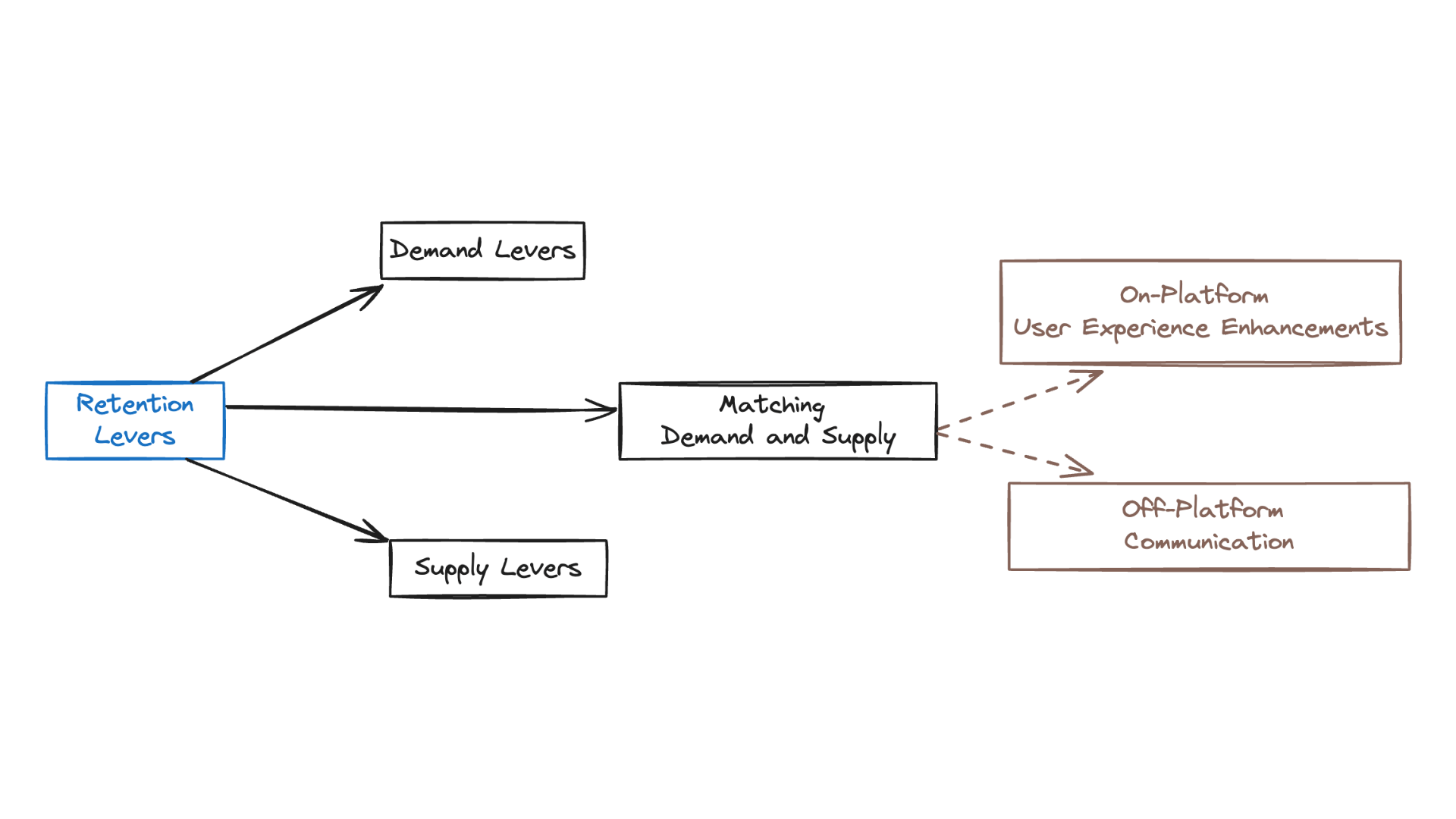What are the Different Types of Retention Levers?
Building on our understanding of what customer retention is and how it's calculated across different business models, it's crucial to first establish a structured framework of the levers that influence retention.
While the framework of levers remains similar to those used for activation, the weightage of each lever and the specific tactics within them vary significantly when focusing on retention.

☞ Demand-Side Levers:
As with activation, the biggest lever to improve retention rate is by aligning the marketing channels as well as communication with the customer persona with the higher retention.
The good part of this is that noticing core persona among the power users of the platform are easier to notice both quantitatively (in retention data) as well as qualitatively (in customer interviews, for example).
Example: An e-commerce company might survey the newer cohorts especially from newer channels to see if they align with their core customer persona.
☞ Supply-Side Levers:
Focused on delivering consistent quality and reliability, these levers aim to meet or exceed customer expectations at every touchpoint. This could involve enhancements to product quality, customer service, and delivery processes.
Example: A gourmet food delivery service could ensure customer retention by consistently offering fresh, high-quality ingredients along with flexible delivery scheduling to accommodate customer lifestyles.
☞ On-Platform Levers:
These include enhancements to the digital platform that improve user experience and foster engagement, such as personalized dashboards, gamification elements, and proactive customer support.
Example: An e-learning platform could introduce interactive course progress trackers and achievement badges to motivate learners and reduce dropout rates.
☞ Off-Platform Levers:
Strategies that extend the interaction beyond the main service or product platform, helping to keep the brand relevant in the customer’s daily life. This includes targeted emails, dynamic retargeting ads, and active social media engagement.
Example: A fitness app could engage users through weekly personalized fitness challenges sent via email that encourage regular app usage and goal setting.
Integrating Levers for a Comprehensive Strategy:
Effective retention requires a cohesive approach that integrates these levers to cover all phases of the customer journey.
This involves looking at all potential lever buckets, and applying them systematically, in order to improve the customer retention rate.